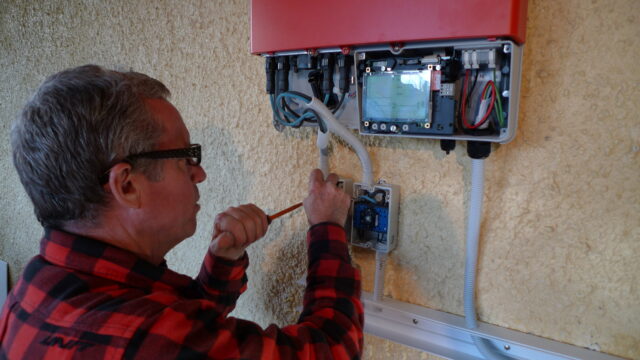
Given the increasing demand for solar products in the home, it can often become a case of technical information overload. Solar Connection looks at what you need to know about an essential element in any solar powered system – the inverter.
In addition to the modules themselves, a solar inverter is arguably one of the most important aspects of any photovoltaic (PV) installation. After all, these highly complex electronic devices provide the link between the solar modules and the electricity grid.
They change the direct current (DC) produced by the modules into alternating current (AC) and then feed this into the electricity grid at the appropriate voltage for the local network. As soon as there is enough sunshine available to produce electricity, the inverter unit monitors voltage and frequency.
However, an inverter also plays a role in safety. If there is a shut down or interruption within the grid, the inverter will automatically shut down and stop the feed of current to the grid.
“All of these different functions steered by complex electronics show just how important inverters are in solar installations,” Conergy Australa general manager David McCallum says.
“Behind the scenes, it is the inverter that is pulling the strings. Your installed system’s proper functioning and output is largely determined by the inverter’s durability, processing, efficiency and functions.”
When it comes to selecting an inverter, it’s important to look at quality, processing and efficiency, as this will allow for a higher output and therefore a higher return.
“User-friendliness and ease of installation are also important as this is where you can save time and money,” he says.
But how can you tell if an inverter is a high quality and efficient processing unit or not?
Firstly, take a quick look behind the scenes and check out the manufacturer’s company profile. Look for the length of warranty they provide (we recommend more than five years), their accreditations with the Clean Energy Council and if the product is supported by the manufacturer with Australian-based offices.
Also, the efficiency of an inverter is measured by how well it converts the DC electricity into AC electricity. Try to find a module that rates between 95 to 97.5%.
Finally, look for a Maximum Power Point (MPP) voltage range in the module data sheet. For best performance in this case, the ‘off-load voltage’ of each string (PV module array) should be around 700. This will ensure that a voltage drop on bad weather conditions will not switch off the whole system.





